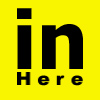|
|
|
 |
 |
| Home » Programming » Visual Basic » Tray Icon control [Sept, 22 1999] |
| Prologue |
| Platform : VB 6.
Since the first time I use VB 5 in Windows 95, I always wondering How do I add an Icon in the task bar like other cool application does? I've been looking for ActiveX object on the net but none satisfied me (Well some of them did, but their price was unbelievable). I started to read Windows SDK to get more information and I realized that Windows Shell already provide interface for Task Bar. What we're going to do now is creating our own User control for Tray Icon. I've tried to find the easiest way to implement it in Visual Basic to avoid GPF or other unpleasant things happening. You won't need to redirect windows callback function or sub classing technique (as I did for several cases with VB). We will use the simplest solution but yet elegant.
|
| Implementation |
| Designing our own Tray
Icon control
Let's think about our user control.
To notify the Form that contains our control we have to provide custom event. Here are some examples. Public Event
OnLeftButtonDown(Shift As Integer) Shift value will indicates keyboard status. Our control should expose interfaces for showing and hiding Tray Icon. Public Sub
Show() That's it. Now we have to look deep with the real work using the API. Shell_NotifyIcon(...) API The first you have to know is the interface to make the whole thing works. Public Function Shell_NotifyIcon(ByVal dwMessage, lpData as NOTIFYICONDATA) as Long dwMessage, this message parameter will tell the task bar what to do. There are 3 constants for this message:
lpData, this is a reference to NOTIFYICONDATA structure that holds the information for our tray icon. The task bar will use the data for adding, modify or removing the icon. NOTIFYICONDATA structure NOTIFYICONDATA has 7 members: Private Type NOTIFYICONDATA cbSize, the size of the structure. You can get this by using VB's Len() function. hWnd, window handle that will recieve the notification callback from taskbar. uID, ID for our icon, any integer value will do. uFlags, array of flags that holds information for out icon data.
uCallbackMessage, the callback message we will receive whenever user click or double click or icon. hIcon, handle to icon. szTip, null terminated string for tooltip. Callback Message When ever there's an event occured upon our icon such as mouse click or double click, the system will send notification message, the one that we registered with the NOTIFYICONDATA structure, and we should response to it. With Visual Basic, to handle User defined messages you have to change your windows message handler with sub classing technique. But what if we use system message instead? But we have to be really carefull choosing the right message or your window might misinterpreted the message and unpleasant thing will occured. Since we're going to create our own user control and there will be no message taken in our user control we will use WM_MOUSEMOVE message for our notification message. System will send the notification message through b value which is X and Y in Visual Basic MouseMove event. We only need the X value since it is reside in the lower word of LPARAM. But the problem is the X value represented in Visual Basic twips caling mode. To get the original value we can divide-integer it with Screen.TwipsPerPixelX. value = x \ Screen.TwipsPerPixelX And then all we need to do is check the value and raise our custom event. Private Sub UserControl_MouseMove(Button As Integer,
Shift As Integer, _ Showing and Hiding Tray Icon The implementation of Show() anf Hide method is very simple. Just examine the codes below: Public Sub Show()
|
| Epilogue |
|
We've done it! That's all it takes to build our control. Well, of course we need some extra works for Properties and Display stuff. But the main issue for our ActiveX control project is covered. You will have to go to Products and Download section to download example project files. Please read the disclaimer policy. If it isn't there, please wait for a couple of days. I'm still busy uploading stuff and building my web site when I write this article. I hope this article will come handy for you. Benni Adham |
|
|
|
Home
| inHere | Products
| Projects | Programming
Stuff Copyright © 1999 AdNet®. All rights reserved. AdNet® is registered to Benni Adham. |